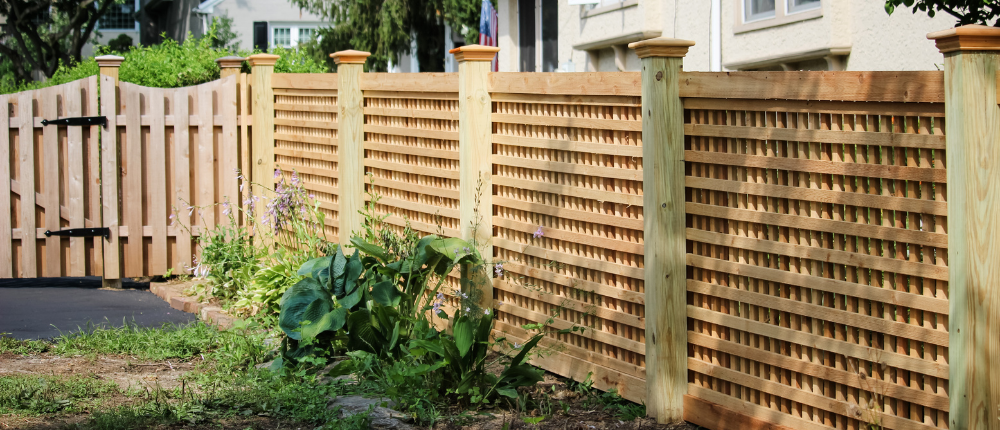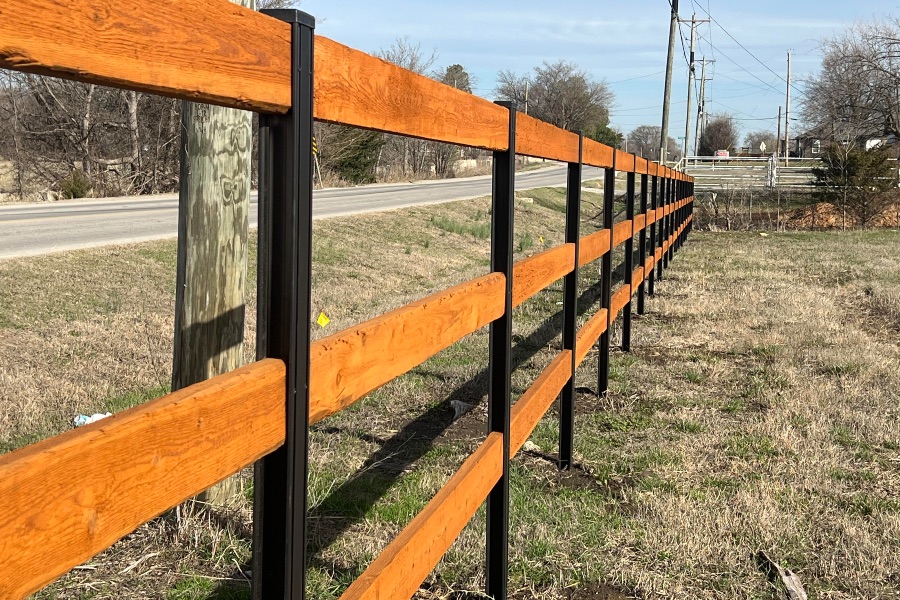All Categories
Featured

Whether your fencing is made of timber, vinyl, chain link, or steel, complying with a few easy maintenance techniques can ensure that it continues to be in outstanding condition for years to come. Below are some useful ideas to keep your fencing looking fantastic and performing well.
- Execute Normal Examinations. On a regular basis checking your fencing is vital to recognizing concerns prior to they end up being major issues. Every few months, walk your residential or commercial property and examine the fence for visible damages. Try To Find:
Missing or loose boards or panels: Whether it's steel, vinyl, or wood, look for any kind of loosened sections that may require to be reattached or changed. Corrosion or corrosion: Metal fencings, consisting of chain link or functioned iron, can establish rust with time. Early discovery permits you to tidy and deal with the impacted locations prior to they spread out. Signs of rot: Wood fences are specifically vulnerable to rot, specifically at the base of posts and slabs that touch with the ground. Try to find soft areas, staining, or mold and mildew, which might indicate dampness damages. Stability of blog posts: Over time, fence articles might end up being unsteady or loosened. This can lead to leaning areas or even collapse, so make certain that blog posts are safely secured in the ground. 2. Clean the Fence Consistently. Cleaning your fencing is among the most basic and most efficient ways to preserve its problem. Mold, dirt, and particles can build up, triggering discoloration and use with time. Here's exactly how to clean up different sorts of fencings:

Wood Fencings: Utilize a stress washer or a scrub brush to eliminate dirt and mold and mildew. Be cautious not to use too much stress with a power washer as it could harm the wood. Utilize a timber cleaner or a light detergent to get rid of spots if necessary. Plastic Fencings: Vinyl fences are reasonably low upkeep and can be cleansed with soapy water and a soft towel. Prevent severe chemicals or unpleasant materials, as they can scratch the surface area. Steel Fences: Light weight aluminum or steel fences can be cleaned with a soft sponge and soapy water. For rust spots, make use of a cable brush or rust remover prior to using touch-up paint to stop the corrosion from dispersing. Chain Web Link Fences: Simply hose pipe down chain web link fencings to eliminate dust and debris. Cut it back to avoid unnecessary pressure on the framework if greenery has actually expanded over the fence. 3. Deal With Wooden Fences for Security. Wood fencings require added treatment due to their susceptability to weather. Dampness from rainfall, snow, and humidity can create timber to rot, warp, or swell. To protect your wood fencing, consider the following:
Seal or Tarnish the Wood: Using a protective sealant or stain will help preserve the timber and safeguard it from the aspects. This will additionally provide the timber a fresh, refined appearance. Be certain to reapply the sealant every 2 to three years to maintain its safety obstacle. Examine for Termites: Wood fencings can be prone to termite damages, specifically in damp locations. Maintain an eye out for indicators of problem, such as tiny openings, wood dirt, or the existence of the bugs themselves. Consult a professional bug control solution to resolve the issue if you locate termites. 4. Trim Plants Around the Fencing. Plants and hedges expanding too near your fencing can cause long-lasting damages if left unchecked. Disordered roots can push versus fencing articles, triggering them to loosen up, and creeping plants can exert pressure on wood or metal panels, potentially bending or breaking them. Furthermore, plants growing too near the fencing can hold dampness against the surface, which can result in rot or corrosion.

Make it a practice to trim back any type of plants, vines, or shrubs that might be expanding near your fence. This will certainly not just keep the surround far better problem but additionally boost the total appearances of your lawn.
- Address Corrosion and Deterioration Quickly. For steel fences, rust and deterioration can be a significant concern otherwise attended to quickly. To prevent rust from spreading out:
Tidy and Sand Affected Areas: For minor rust spots, use a cable brush or sandpaper to eliminate the corrosion. After cleaning, apply a rust-resistant primer and paint to secure the steel from additional deterioration. Usage Rust-Resistant Coatings: Take into consideration applying a rust-resistant finishing to your metal fencing to extend its life expectancy. This can aid prevent brand-new corrosion places from developing and maintain your fence looking great. 6. Keep and protect Fencing Blog posts. The security of your fence depends greatly on the articles. If the posts hang or damaged, the whole framework can end up being jeopardized. Ensure to check the posts frequently to inspect for signs of wear, leaning, or instability.
For Wood Messages: Wooden fencing blog posts can rot at the base. If you notice indicators of rot or degeneration, it may be needed to replace the post. For Metal or Vinyl Posts: Ensure that steel or plastic blog posts are safely secured and not bent or damaged. If required, tighten loose screws or readjust the positioning of the articles to keep the fencing standing high. Final thought. Keeping your fencing doesn't have to be a daunting task. With regular cleaning, assessments, and some standard treatment, your fencing can continue to be a useful and attractive function on your residential or commercial property for several years. Whether you have a wooden, chain, vinyl, or steel link fence, following these tips will assist you get the most out of your financial investment while guaranteeing your fencing stays in fantastic condition, providing the personal privacy and safety and security you need.
Latest Posts
Simplify Your Financial resources with WyHy's Coinstar Solution
Published Apr 20, 25
1 min read
Auto Repair Services: Expert Vehicle Service You Can Trust !
Published Apr 20, 25
2 min read
Roof for Extreme Climate-- Preparing Your Chicago Home for Winter
Published Apr 20, 25
1 min read
More
Latest Posts
Simplify Your Financial resources with WyHy's Coinstar Solution
Published Apr 20, 25
1 min read
Auto Repair Services: Expert Vehicle Service You Can Trust !
Published Apr 20, 25
2 min read
Roof for Extreme Climate-- Preparing Your Chicago Home for Winter
Published Apr 20, 25
1 min read